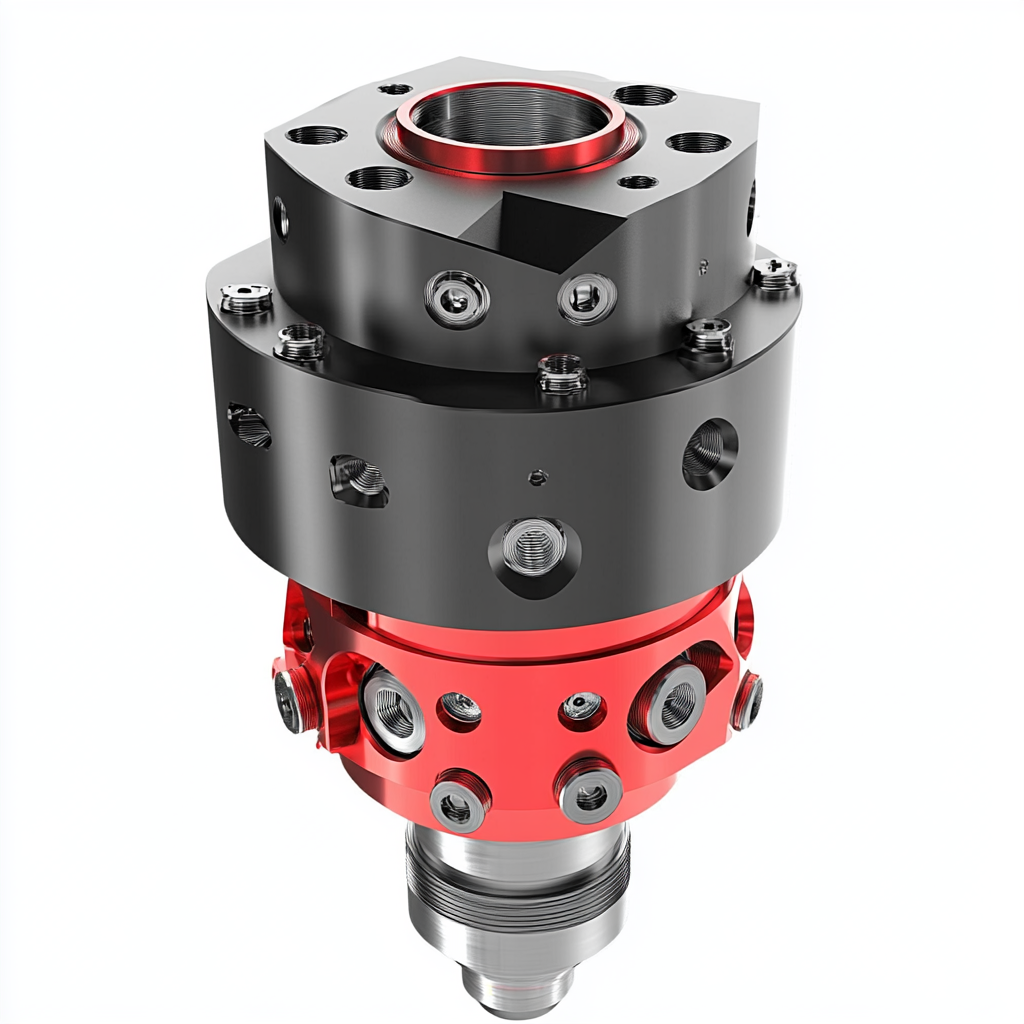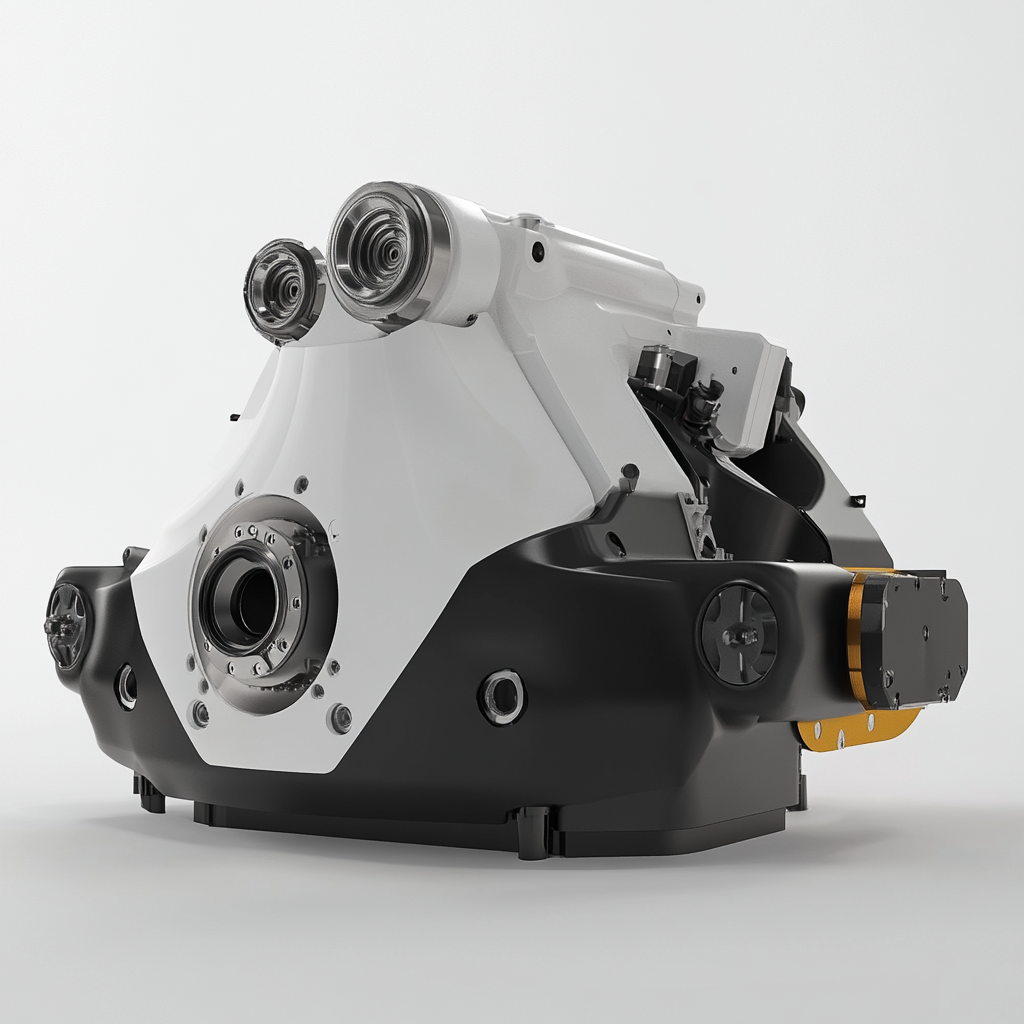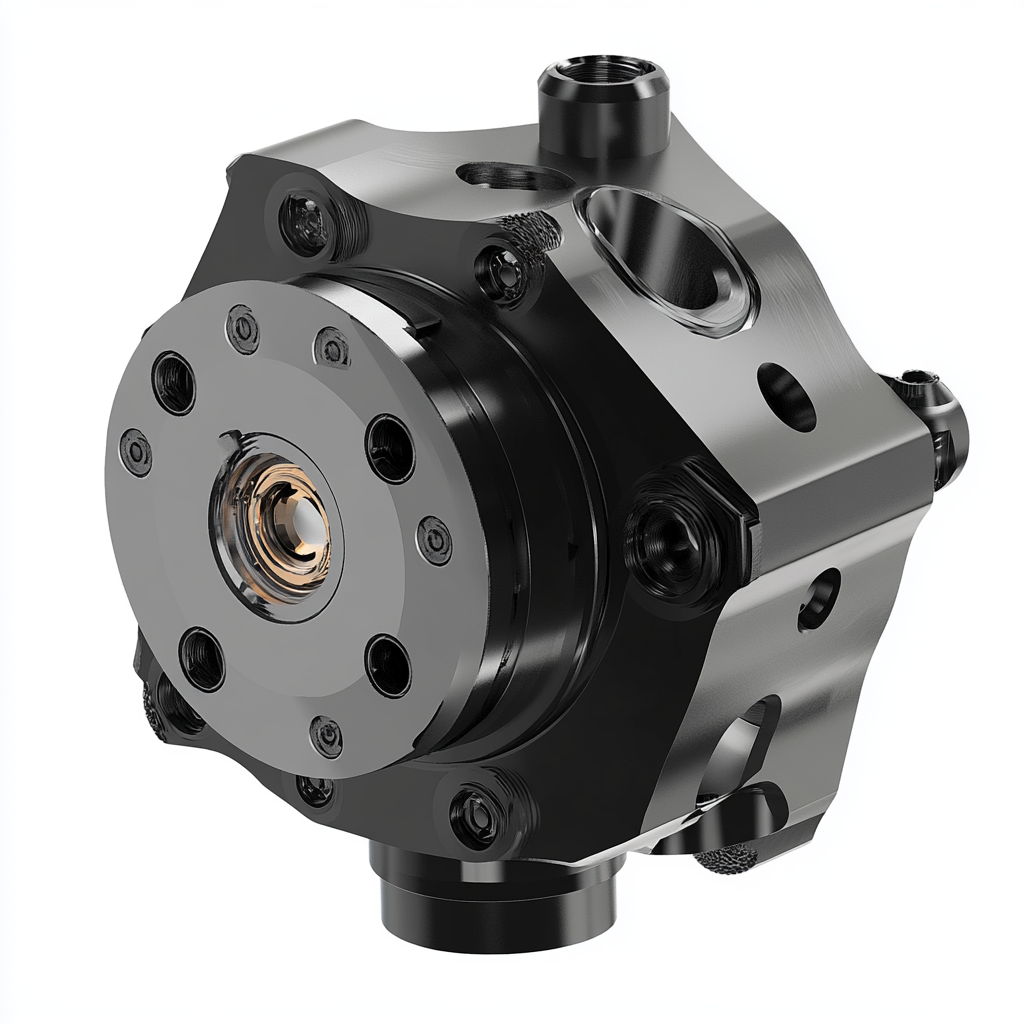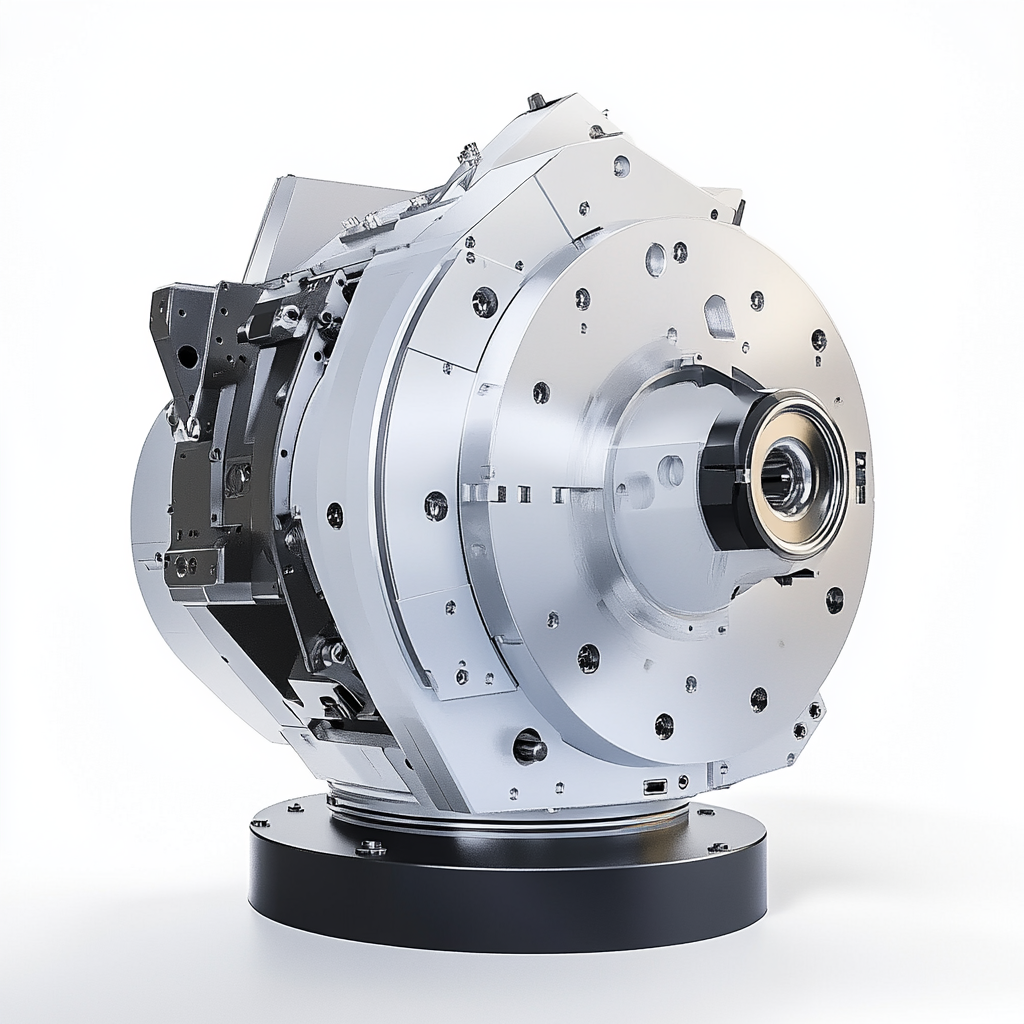
- sales@bjbod.com
- Mon - Sat at 7:00AM to 9:00PM

In the realm of precision machining, the Right Angle Milling Head stands as a pivotal instrument, enabling the efficient operation of various milling tasks. As industries continue to evolve, there is a pressing need to enhance the performance and efficiency of these milling heads. The ability to optimize machining processes through innovative design and technology holds the key to meeting the increasing demands for productivity and precision. This blog will delve into groundbreaking solutions that aim to enhance the efficiency of Right Angle Milling Heads, ensuring that manufacturers stay at the forefront of competitive manufacturing.
Innovation is the driving force behind improvements in machining efficiency. By exploring state-of-the-art technologies, materials, and design modifications, we can uncover new ways to maximize the capabilities of Right Angle Milling Heads. This exploration not only seeks to reduce downtime and operational costs but also aims to improve the overall quality of milled products. Join us as we investigate the latest advancements and innovative solutions that can transform the traditional approaches to milling, ultimately paving the way for a more efficient and productive future in machining.

Innovative technologies are continuously reshaping the landscape of right angle milling heads, significantly enhancing their efficiency and versatility. One of the most notable advancements is the introduction of a coolant-through feature, which allows enhanced cooling directly at the cutting edge. This innovation improves chip removal and extends tool life, leading to higher productivity rates. Recent reports indicate that businesses leveraging such technologies can expect up to a 30% increase in operational efficiency, making it an enticing solution for manufacturers looking to optimize their machining processes. Furthermore, the integration of high-speed spindles and inline accessories, such as angle heads, is revolutionizing machining centers. These tools not only facilitate faster production rates but also enable intricate operations that were previously challenging to execute. Data from industry analyses suggest that implementing these advancements can reduce cycle times by approximately 25%, providing manufacturers with a competitive edge. As the demand for precision and efficiency in machining grows, exploring these innovative solutions for right angle milling heads becomes indispensable for modern manufacturing operations. The milling industry is facing a transformational shift with technologies that improve tool performance and operational productivity. As manufacturers adopt these advanced tools, they should prepare to invest in the necessary infrastructure and training to fully leverage these enhancements. The potential gains from harnessing such innovations are likely to reshape market dynamics, positioning those who adapt quickly to thrive in an increasingly competitive environment.

In the world of machining, the efficiency of milling heads plays a crucial role in productivity and precision. Recent studies indicate that factors such as tool material, coolant application, and machining parameters significantly impact milling head performance. A report by the International Journal of Machine Tools and Manufacture highlights that using high-speed steel and carbide tools can improve tool life by 30-50%, directly enhancing milling efficiency.
Additionally, optimizing the coolant flow rate has been shown to reduce tool wear and thermal distortion, leading to tighter tolerances. A survey conducted by the Society of Manufacturing Engineers revealed that incorporating advanced coolant systems can boost machining efficiency by up to 20%. Furthermore, setting the right spindle speed and feed rates is critical; analytics from industry performance metrics suggest that tuning these parameters can yield a productivity increase of nearly 25%, demonstrating the importance of precise control in milling operations.
As manufacturers strive for higher efficiency, the exploration of innovative solutions, such as adaptive control systems, is gaining traction. These technologies can analyze real-time data to adjust machining parameters dynamically, optimizing performance continuously. Industry leaders predict that the integration of AI-driven systems into milling processes may lead to efficiency enhancements surpassing traditional benchmarks, positioning them as vital advancements for the future of manufacturing.

The realm of milling has seen a significant evolution over the past decade, with traditional milling solutions often being outperformed by innovative technologies. A comparative analysis between these traditional methods and the latest advancements reveals a marked difference in efficiency and precision. According to a recent industry report by the Milling Technology Association, traditional milling heads operate at an average efficiency of 75%, while innovative solutions can achieve efficiencies upward of 92%. This substantial improvement highlights the need for manufacturers to reconsider their milling strategies.
One of the most striking innovations in right-angle milling heads is the introduction of adaptive control systems. These systems utilize real-time data to adjust milling parameters dynamically, resulting in reduced cycle times and enhanced surface quality. Research conducted by the Advanced Manufacturing Institute indicates that companies adopting these technologies have reported a 30% increase in productivity. Additionally, the reduction in tool wear and tear plays a crucial role, with a noted decrease of up to 40% in maintenance costs compared to traditional milling heads.
Furthermore, the materials used in innovative milling solutions are contributing to their superior performance. Advanced ceramics and coated tools are becoming the norm, allowing for higher speeds and feeds. A study published in the Journal of Manufacturing Processes confirms that these materials can withstand higher temperatures, thus maintaining their cutting edge for longer periods. As manufacturers continue to explore these advancements, the gap between traditional and innovative milling solutions will likely widen, pushing the industry towards greater performance and sustainability.

In the realm of precision machining, the quest for enhanced efficiency has driven the adoption of advanced milling heads. Recent case studies illustrate how these innovative solutions have been successfully implemented across various industries, significantly improving productivity and accuracy. For instance, a prominent aerospace manufacturer recently integrated an advanced right angle milling head into its workflow. This upgrade reduced machining time by 30%, enabling the company to meet tight production deadlines while maintaining stringent quality standards.
Another compelling example comes from the automotive sector, where a major auto parts supplier faced challenges with complex geometries and intricate designs. By employing a state-of-the-art milling head, the supplier was able to achieve superior surface finishes and increased tool life. The result was not only a reduction in operational costs but also an enhancement in the overall performance of their production line. The switch facilitated more versatile machining capabilities, allowing quick transitions between different parts without significantly affecting lead times.
Moreover, a comparison of productivity metrics before and after the implementation of these advanced milling heads reveals a consistent pattern of improvement. Companies leveraged data analytics to monitor performance, leading to informed adjustments that further optimized their milling processes. These case studies underscore the importance of embracing cutting-edge technologies in milling applications, demonstrating how companies can achieve notable gains in efficiency and quality.
The future of right angle milling technology is increasingly leaning towards innovative solutions aimed at enhancing efficiency. As manufacturing demands evolve, engineers are exploring advanced materials and designs that promise significantly improved performance. For instance, the integration of lightweight yet durable materials can not only reduce tool wear but also increase machining speed. Such advancements are not merely incremental; they represent a paradigm shift in how milling heads operate, translating into cost savings and higher productivity for manufacturers.
Another key trend shaping the future of right angle milling heads is the adoption of smart technology. The incorporation of sensors and IoT connectivity enables real-time monitoring and data collection during milling operations. This data can be analyzed to optimize parameters for specific materials, thereby enhancing tool life and ensuring precision. Additionally, predictive maintenance, driven by analytics, can prevent equipment failures, further contributing to overall efficiency. As manufacturers aim for leaner operations, these smart solutions will likely become indispensable.
Moreover, automation in milling processes is poised to revolutionize the industry. With advancements in robotics, the routine tasks associated with aligning and changing milling heads can be streamlined, reducing downtime and increasing throughput. As companies aim to remain competitive, embracing these innovative solutions will play a crucial role in meeting production demands while maintaining high-quality standards. The intersection of technology and engineering in right angle milling is set to pave the way for greater efficiency and success in manufacturing.